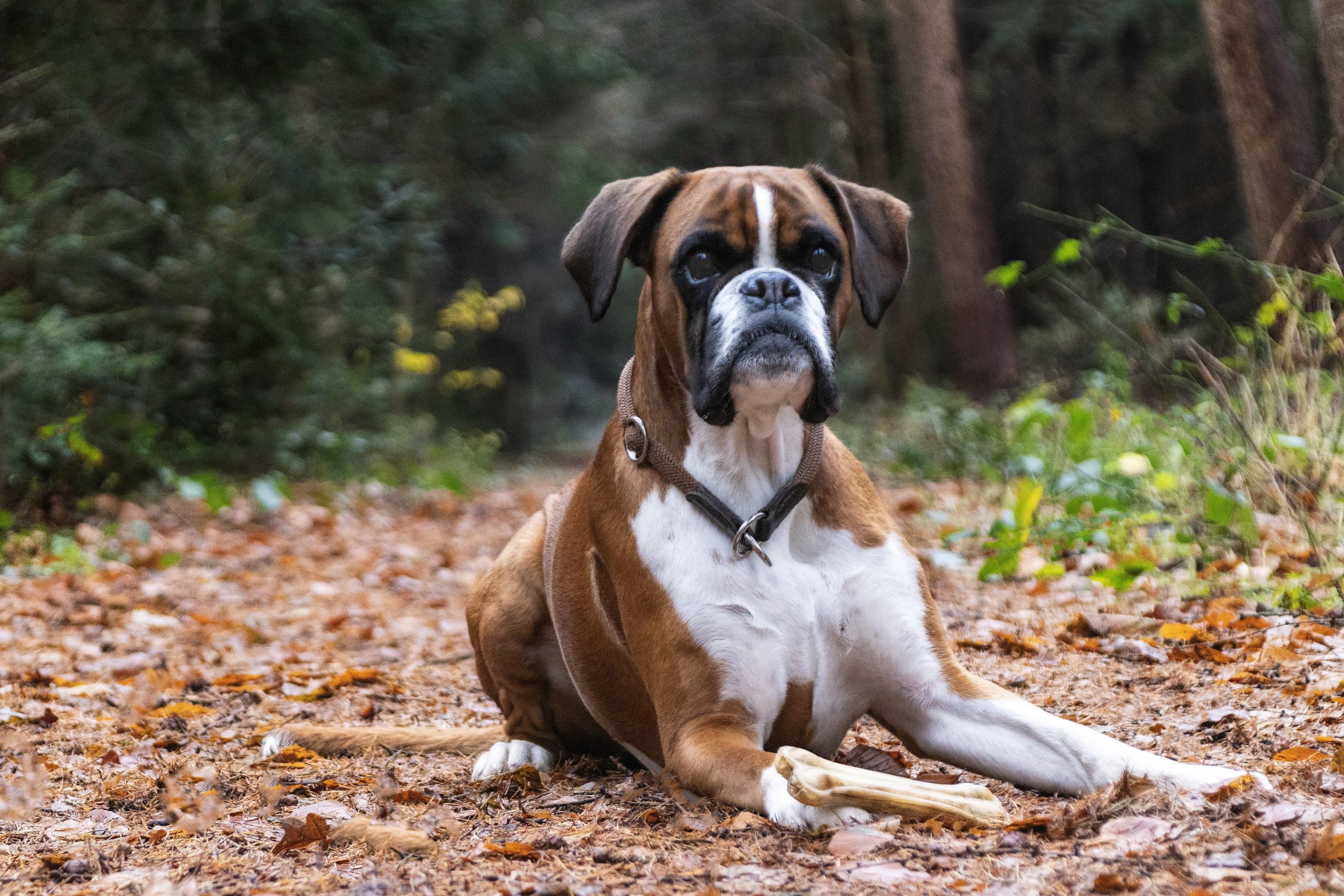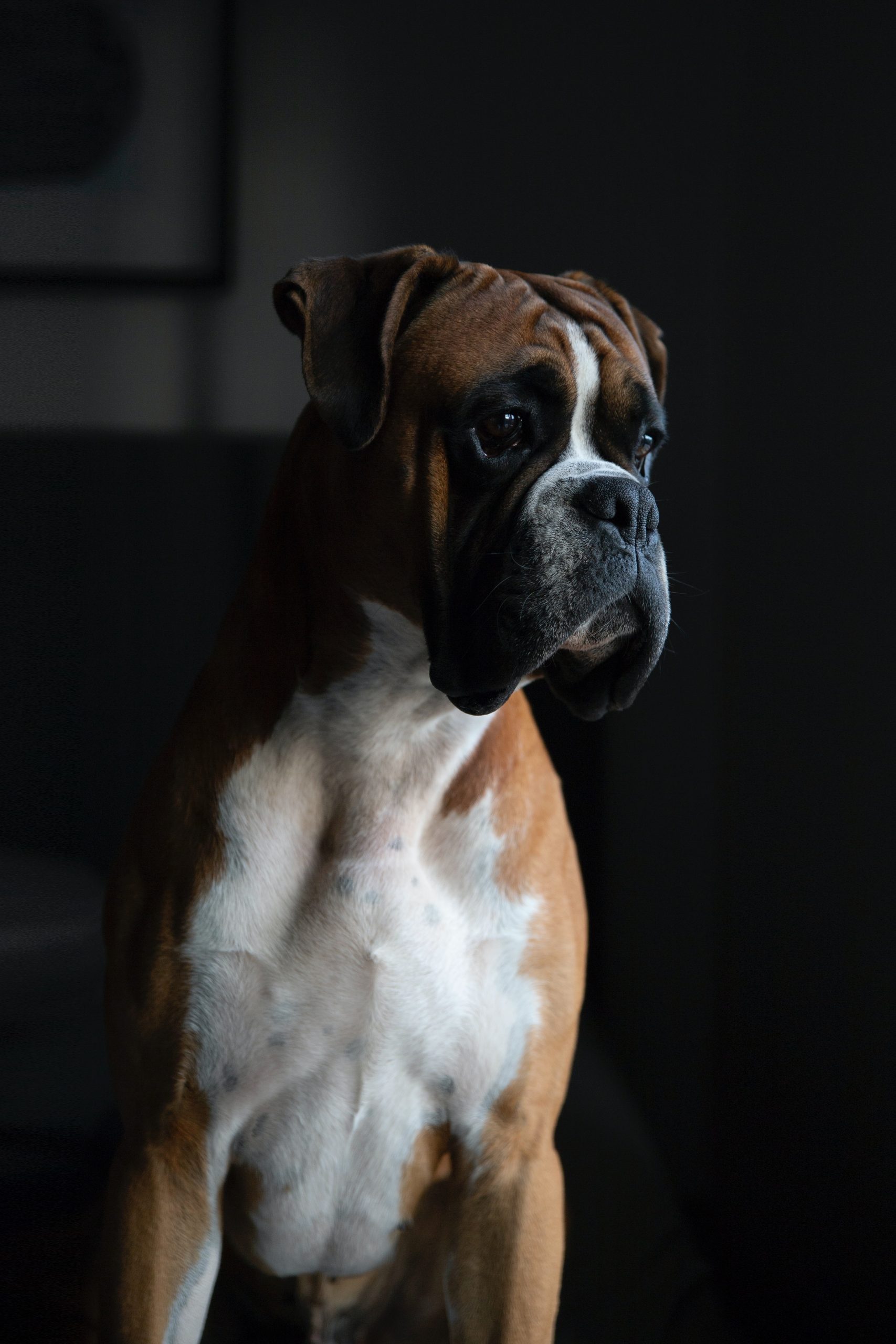Boxers have it all: loyalty, affection, intelligence, work ethic, and good looks. Bright and alert, sometimes goofy but always fearless, the Boxer has long been one of America’s most beloved dog breeds. A well-made Boxer in top condition is a sight to behold. Males can stand up to 25 inches tall at the shoulders; females are shorter. Under a short, tight-fitting coat, their muscles ripple. The dark brown eyes and furrowed brow give the face an alert, inquisitive expression. With white markings, the coat might be fawn or brindle. Boxers move like the sportsmen for whom they are named: gracefully and with a tremendous forward thrust. Boxers are cheerful and playful. Their patience and protective instincts have given them the reputation of being excellent dogs for youngsters. They take their roles as watchdogs and family protectors seriously and will face threats head-on. Boxers thrive when they are exposed to a large number of people and other animals as puppies.
Boxer
Average sizes and life
expectancy of the breed.
Height
23-25 inches (male)
21.5-23.5 inches (female)
Weight
65-80 pounds (male)
females are about 15 pounds less than male
Life Expectancy
10-12 years
Breed Traits & Characteristics
About the Breed

Owning a dog is not just a privilege; it’s a responsibility. They depend on us for, at minimum, food and shelter, and deserve much more. When you take a dog into your life, you need to understand the commitment that dog ownership entails.
 Health
Health
Recommended Health Tests From the National Breed Club:
- Hip Evaluation
- Thyroid Evaluation
- AS/SAS Cardio
- Aortic Valve Disease
- Arrhythmogenic Right Ventricular Cardiomyopathy (ARVC) Test
- Degenerative Myelopathy DNA Test
- Holter Monitor Testing for Boxer Cardiomyopathy, Annually
- Elbow Evaluation
 Grooming
Grooming
 Exercise
Exercise
 Training
Training
 Nutrition
Nutrition
History
The Boxer’s progenitors, the Assyrian empire’s military dogs, dating back to 2,500 B.C. But what we now call a Boxer may be traced back to Germany in the late 1800s and early 1900s. The breed is supposed to have been bred down by German dog fanciers from the Bullenbeisser (“bull biter”), a larger, heavier German breed.
The Bullenbeisser was Germany’s top big-game hunter in medieval times, utilized by noblemen to pursue down, catch, and keep such dangerous opponents as a bear, bison, and wild boar on huge ducal estates. The political situation in the German states was changing by the early 1800s. German nobles were unpopular. Their estates were divided, and the long-held ritual of lavishly appointed boar hunts was discontinued. The great Bullenbeisser was out of work by 1865.
The outmoded big-game hunter was given new life by strategic crosses to a smaller, mastiff-type breed from England. By the late 1800s, the contemporary Boxer, a sleeker, more attractive dog, had emerged. (The English name Boxer relates to the way the breed spars with its front paws, much like a prizefighter, whether playing or defending oneself.)



